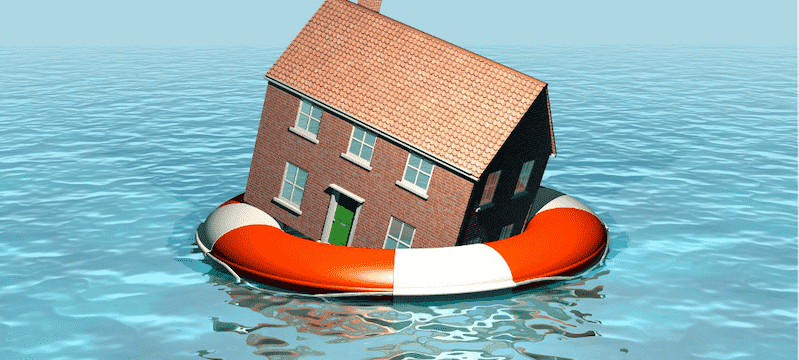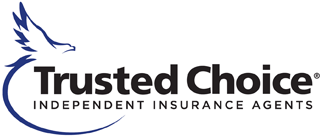Flood damage should never be underestimated. In 2019 alone, the average amount paid to repair water damage was $2,582. Costs may also vary depending on how many of your personal items were also destroyed by flood water.
The best way to avoid high costs and streamline repairs is with flood insurance. Flood insurance in Florida is a widely known necessity, but there are also a lot of flood insurance policies in the market. In addition, you may not even need to purchase one if you don’t need it.
- It Could Be Required
First of all, it may not be up to you whether you purchase flood insurance. There are certain areas considered high-risk flood zones where flooding is more likely to occur. These could be homes next to lakes, rivers, or even at the bottom of an incline.
What that means is your home is at a higher risk of suffering water damage as a result of flooding. Mortgage lenders aren’t a fan of risky investments. As such, they often require homeowners to purchase flood insurance before they can get approved.
One thing to keep in mind is that flood insurance is separate from homeowner’s insurance in most cases. While homeowner’s insurance will cover things like broken pipes, it doesn’t cover weather-related flooding. This is partly because you can actively do something to prevent a broken pipe, but you can’t do much against severe flooding.
- NFIP Insurance Availability
There’s a good chance that your home qualifies for the National Flood Insurance Program (NFIP). This is a program created in 1968 as a way for FEMA to offer flood insurance to participating regions. It involves a floodplain management ordinance and might be your only option in certain areas.
Currently, there are over 50 insurance companies and NFIP Direct that work with FEMA. The only downside is that it tends to be more expensive than other flood insurance policies.
Additionally, there is a 30-day waiting period before the coverage kicks in. You’ll need to talk to your insurance company to see if they offer NFIP policies. More information is available on FEMA’s website.
- What Affects Costs
Homeowners may face higher premiums if they live in an area with higher flood risk. The best way to determine whether your home is at risk is by checking FEMA’s flood maps. All it requires is your home address.
Moderate to low-risk flood zones are those further away from bodies of water. While they may have trouble during heavy rainfall, the chances of flooding are much lower than in other areas.
Meanwhile, a high-risk flood zone is one that faces a constant threat of flooding. It could be a coastal area or a low-lying region. Some kind of flood insurance is required for these homeowners.
There are a select few areas on FEMA maps that do not have an official classification. They may still suffer flooding, but the risk hasn’t been calculated as of yet.
- What it Covers
An important thing to know is exactly what flood insurance covers and what it doesn’t. As the name implies, it helps pay for repairs after major flooding. However, not every type of water damage is included in that coverage.
The cause of the flooding matters. For example, a sewage backup due to flooding would be considered a directly related event. However, a flooded basement due to a burst pipe would not be covered.
Homeowner’s insurance is what you’d need for the latter situation. In that case, you may also need a plan with more comprehensive coverage.
Although hurricanes often result in flooding, hurricane insurance usually does not cover the damages. Most of that coverage is related to the damages caused by heavy winds. However, some policies do have supplemental flood insurance you can purchase.
- Your Local Flood History
When looking for flood insurance, it’s important to know the flood history of a property. This is especially true before you buy a house.
Even if your home is not located near a large body of water, it can still suffer flooding for a variety of different reasons. You might live in a state where hurricanes happen at least a few times every year. Even desert towns can suffer major flooding.
Sellers must disclose any information regarding flood risk. They should also be able to give you an estimated flood risk quote based on the other neighboring properties.
Keep in mind that Florida has no area that is completely immune to flooding. Due to its low elevation and high risk of violent weather, it’s always a possibility.
- Flood-Proofing Your Home
One thing that can save you money on flood insurance is preparing your home in advance. It’s not only your location that matters when it comes to premiums, but your level of risk. A home that is located at the bottom of a hill next to a lake is a high-risk property.
Doing your due diligence will also help increase your chances of getting a payout. It shows that you’ve put in the effort to protect your home and suffered damage regardless.
If you can’t afford to prepare your home, there are ways to cover the cost. An NFIP policy may help pay for things like water pumps, plastic sheeting, and sandbags.
For a low-cost solution, some fire departments may prepare sandbags for you to take before a hurricane. You can also dig a trench around your house to help minimize and redirect flood water.
Find the Best Flood Insurance Options
Even if you’ve never had to face a major flood in the past, it doesn’t mean it won’t ever happen. It’s especially risky living in Florida, which is known for its heavy rain and hurricanes. Flood insurance will save you thousands of dollars in a worst-case scenario.
Harris Insurance can help you find the best insurance for your needs. We can get quotes for anything from life to business to homeowner insurance. Request a quote online and contact us for more information.
LEGAL DISCLAIMER
Views expressed here do not constitute legal advice. The information contained herein is for general guidance of matter only and not for the purpose of providing legal advice. Discussion of insurance policy language is descriptive only. Every policy has different policy language. Coverage afforded under any insurance policy issued is subject to individual policy terms and conditions. Please refer to your policy for the actual language.




